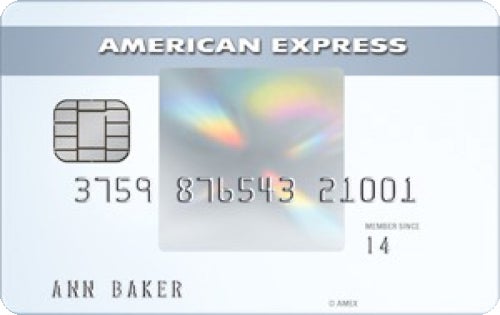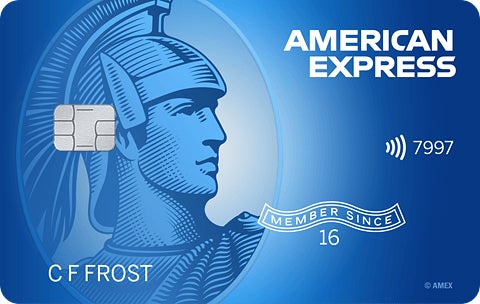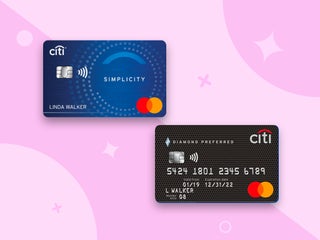Summary
If you’re in the market for a well-rounded grocery card but don’t want to pay an annual fee, the AmEx EveryDay and Blue Cash Everyday cards are both solid options. Read on to see why we think the Blue Cash Everyday has the edge.
The content on this page is accurate as of the posting date; however, some of our partner offers may have expired. Please review our list of best credit cards, or use our CardMatch™ tool to find cards matched to your needs.
If you’re an avid cook or live in a big household with a lot of mouths to feed, then your grocery bill is likely one of your biggest monthly expenses. If you love earning rewards, you may be missing out on a big opportunity to maximize your spending. If you’re willing to use one card for all or most of your grocery spending, then you could amass substantial rewards just by stocking your refrigerator.
American Express offers some of the best grocery-centric rewards bonuses around. Which one should you choose, though? For cardholders who want a well-rounded grocery card but don’t want to pay an annual fee, both the Amex EveryDay® Credit Card from American Express* and the Blue Cash Everyday® Card from American Express offer solid value.
The Blue Cash Everyday Card is, by far, the best choice for most cardholders. Here’s why: If you want to earn as much as possible without paying an annual fee and don’t mind earning cash back instead of Membership Rewards, the Blue Cash Everyday Card is much more rewarding.
Its 3% cash back at U.S. supermarkets (up to $6,000), unlimited 2% cash back at U.S. gas stations and 1% cash back on everything else can add up quickly if you use your Blue Cash Everyday every time you need to restock your kitchen or fill up on gas.
Amex EveryDay vs. Blue Cash Everyday
 Amex EveryDay® Credit Card from American Express |  Blue Cash Everyday® Card from American Express | |
|---|---|---|
| Rewards rate |
|
|
| Introductory bonus |
|
|
| Annual fee | $0 (See rates and fees) | $0 (See rates and fees) |
| Estimated yearly rewards value (for someone who spends $15,900) | $235 | $261 |
| Pros |
|
|
| Cons |
|
|
Rewards rate
If you compare the cards solely on how much you’ll earn from your regular stops at the grocery store, the Blue Cash Everyday Card is the winner.
Though Membership Rewards points generally are more valuable than cash back – we estimate one point to be worth 1.19 cents on average – the 3% cash back at U.S. supermarkets (on up to $6,000 per year, then 1%) on the Blue Cash Everyday Card trumps the Amex EveryDay’s higher point value.
Let’s say you max out on the U.S. supermarket category, spending around $500 per month on groceries. With the Blue Cash Everyday, you’ll easily earn $180. Spending the same amount on groceries with the Amex EveryDay Card only gives you points worth $143.
You may wonder about the 20%-point bonus per billing cycle on the Amex EveryDay. Even that isn’t strong enough to save the card in this battle. If you manage to swipe your card at least 20 times in a billing cycle, you’ll earn $171 worth of points. To overcome that $9 difference between the Blue Cash Everyday and the Amex EveryDay, you’d have to spend around $757 more on the Amex EveryDay (at a rate of 1X point after reaching the grocery spending cap).
Average rewards when you spend $6,000 on groceries
| Blue Cash Everyday Card | American Express EveryDay Card |
|---|---|
| $6,000 (grocery spending) x 0.03 (3% cash back) = $180 | $6,000 (grocery spending) x 2 (rewards rate) x 0.0119 (point value) =$143 ($6,000 (grocery spending) x 2 (rewards rate) + ($6,000 x 2 x 0.20 (20%-point bonus))) x 0.0119 (point value) = $171 |
Welcome bonus
The Amex EveryDay gives you 10,000 points after you spend $1,000 in the first three months. With each Membership Reward point worth around 1.19 cents, your welcome bonus comes out to $119. In contrast, the Blue Cash Everyday Card’s introductory offer is $200 statement credit if you spend $2,000 in six months.
Yes, the spending goal of the Blue Cash Everyday is more, but you get six months to achieve it. Divided evenly, you would only need to spend around $333 per month to earn your welcome bonus, which is the same spending rate you’d need to earn the Amex EveryDay Card’s intro offer. Essentially, with the Blue Cash Everyday you can earn more money with the same amount of effort.
Redemption options
You can redeem the Amex EveryDay earns Membership Rewards points in numerous ways, including travel, dining and entertainment, or you can transfer your points to the issuer’s more than 20 travel partners.
However, keep in mind that the value of the points change depending on how you redeem them. The Amex EveryDay also specifically limits the types of purchases you can apply your statement credit to, so you may find this restrictive.
As for the Blue Cash Everyday, it’s much simpler to redeem your rewards but you must have a minimum of $25 cash back to do it. Options include a statement credit, gift card or merchandise purchase at a rate of $1 for every Reward Dollar.
Amex EveryDay Card: Best for stockpiling points or miles
Existing members of an airline or hotel loyalty program, like Aer Lingus or Hilton Honors, the Amex EveryDay Card is great for you. Though there are other travel cards out there with higher rewards rates, this one is worth it to top up your pile of miles (or hotel points) to make your next flight or stay free.
For cardholders who plan to use the Amex EveryDay as their main card, it’s not worth it. As for the 20% point bonus, the minimum 20 purchases per billing cycle may not be feasible if you use it only for groceries. You could break up one grocery trip into different transactions, but it’s not worth the extra effort. The lack of other bonus categories also makes it difficult to make 20 separate transactions in a billing cycle, unless you don’t mind the 1X point rate.
Other than transferring rewards to an Amex travel partner, this one could be useful if you have another American Express card to cover your other purchases and use the Amex EveryDay only on grocery spending. The good news: Membership Rewards points are pooled into a common account, not on credit card accounts (like Chase Ultimate Rewards), so you don’t need to transfer points between cards.
Blue Cash Everyday Card: Best for small families and simplicity
The Blue Cash Everyday Card also beats the Amex EveryDay on other types of everyday spending by offering 2% cash back on U.S. gas stations purchases. Groceries and gas are two major expenses for families, and even better that the card allows cardholders to earn unlimited cash back on gas.
The $6,000 spending cap on the U.S. supermarket category is a bummer, so you can only spend around $500 per month before you max out 3% cash back. This is realistic for small families with one, maybe two, school-aged kids or couples. However, if you know you easily spend more than $6,000 at supermarkets in a year, you should shop for a card who no spending cap on its grocery category, like the Capital One Savor Cash Rewards Credit Card*.
The other advantage of the Blue Cash Everyday Card is its simple redemption options. To some, having only three choices may feel restrictive. For busy parents who juggle work, school pickups and trumpet lessons, or those focused on climbing up the corporate ladder, the limited options may come as a relief. The simplicity allows you to focus on the important things in life.
Bottom line
In terms of value, the Blue Cash Everyday Card swamps the Amex EveryDay Card. It even offers a better welcome bonus, giving you an extra $80 to spend as you please. Unless you’re an avid Membership Rewards collector, you’ll almost certainly get more value out of the Blue Cash Everyday Card.
*All information about the Amex EveryDay Credit Card from American Express and the Capital One Savor Cash Rewards Credit Card has been collected independently by CreditCards.com and has not been reviewed or approved by the issuer.
Editorial Disclaimer
The editorial content on this page is based solely on the objective assessment of our writers and is not driven by advertising dollars. It has not been provided or commissioned by the credit card issuers. However, we may receive compensation when you click on links to products from our partners.





